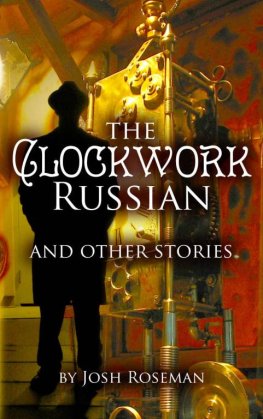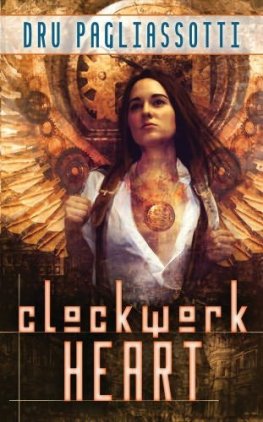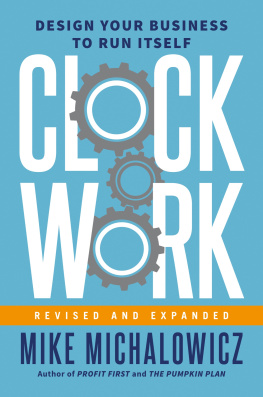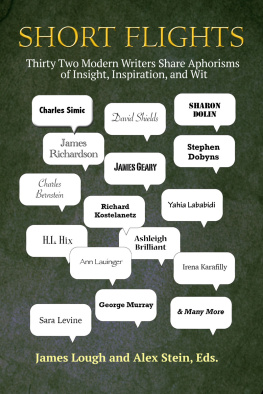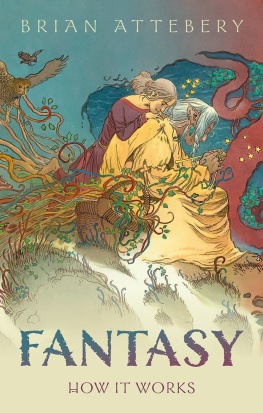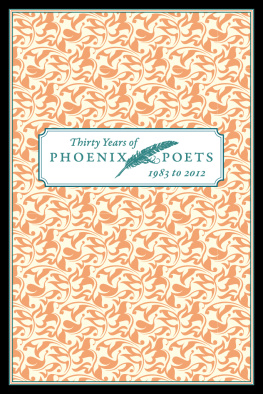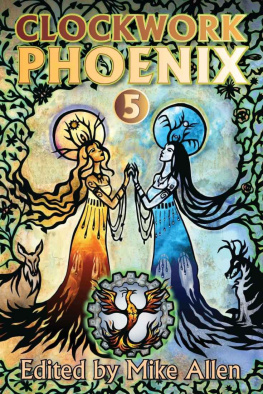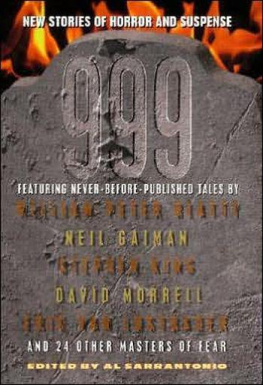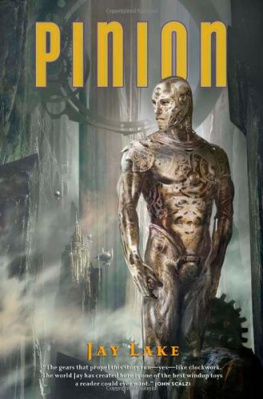CLOCKWORK PHOENIX
Tales of Beauty and Strangeness

Edited by Mike Allen
In memory of Nelson Slade Bond
1908-2006
In honor of Emma Joan Lau,
born 2008
life well lived, life renewed

ACKNOWLEDGMENTS
This volume could never have risen from the ashes of concept and dream without the labor and support of many others besides myself. My wife Anita, who helped me choose the sequence of links in this surreal chain; Catherine Reniere, my assistant editor, who vigorously tackled the daunting task of sorting submissions; Vera Nazarian, without whom, lets face it, there would be no book. Wise advice and heartfelt encouragement from the likes of Kathy Sedia, Sonya Taaffe, Jessica Wick, Amal El-Mohtar, Charlie Saplak and Mike Jones proved invaluable during the long march to publication. Thanks to all, and to any deserving individual whose name has slipped through my porous memory.

INTRODUCTION
by Mike Allen
We begin with fire.
A furnace that burns so hot it seems not even time could survive its temperatures, but yet inside this crucible something is wrestling time backward, condensing matter into a molten pool still too bright to look at as it gathers itself up and white hot parts within start to move.
Ticks and clicks. Springs and gears. Sprockets and chains. Wheels and crowns. Pinions are the small gears in a drive train. Pinions are the outermost feathers on a birds great wing. A rack and pinion convert circular motion to linear motion, like a wheel squealing on a train track.
The raptor stretches its wings until the razor sharp edges of its pinions score and scar the furnace walls. The curved knife of its beak flashes as it tilts its head, as it returns our gaze; hour and minute hands move within its iron-black eyes.
It draws up the needles of its talons and rises from the burnings coals, floats for a moment in the fire. Then it throws itself against the firebox hatch, once, twice, thrice, with thunderous force. A fourth time, and the hatch flies off, and the great bird is birthed from the furnace
Into the cabin of a roaring locomotive. Where is it bound, and where is its Engineer? The cabin is empty, and outside the windows shadows flicker in a greater darkness. The door to the next car is open, and through it a watery trickle of voices underscores the boilers screams. The phoenix clacks its wings once and glides across the gap.
Borne on its wings, we see what it sees as it soars through the oddly long chamber, a space opulent despite the way it narrows, like the inside of an elegant throat.
The car is paneled in ivory and white marble, every squared frame carved with pale faces, some sleeping, some blind; some appear to roll their gilded eyes to follow our flight. Window slats stabbed into the walls reveal more darkness outside, but openings that iris in the ceiling breathe in merciless light, drawn in from some unseen source or unreal place.
Three pillars at the cars far end reveal themselves as we approach to be three identical men, each wearing three-piece suits tailored in midnight black, each with the same shirts pleated harsh white, the same blood red bow ties clasped with a grinning deaths head, their bearded faces sculpted into circus masks. The only differences between these pundits are their words.
One says: Form need not be the end. Function need not be the end. Take my breath away both with the tale and how its told. The beautiful must slave for a purpose. The purpose must serve to feed the beautiful.
One says: To admit boundaries is to admit defeat. To admit boundaries is to admit defeat. To admit boundaries is to admit defeat. To admit boundaries is to admit defeat.
One says: The law is mad. The law is madness, but madness is not the predicate of law. There is no madness in absence of the law. Before its opposition to the law became flesh, madness could never be conceived.
The raptors gaze reads noon. Let us not suffer these fools to live.
Wings stretched to full length fan feathers sharp as razor blades. Their blood is ink, this long shaft of carved white a blank page.
When the pundits have succumbed, the phoenix shakes its wetted feathers and plummets on, through the next car, and the next, and the next. They are all linked, but not in a row; some cars connect through hoops of time; some nestle beside each other, sharing membranes of possibility; some are intertwined like clusters of hearts filled by the same arteries; some are stitched together like quilts, or grafts.
And what of the chambers we rush past within this trains strange body, our wings beating against the air in hopes we wont be ash before the end? What marvels do we see as we leap from gear to spinning gear, hustling daredevil to the precarious edge just for the views? Shadows growing across wallpaper ripples as other forms rustle within the walls; upholstery grown in future times, where arms stretch from the floor and lifeblood warms the ceiling; a train at least as mad as the bird that bears us.
To say nothing of its freight; or its passengers; or its stowaways; or the crazed hobos beneath that ride the rails.


THE CITY OF BLIND DELIGHT
by Catherynne M. Valente
There is a train which passes through every possible city. It folds the world like an accordioned map, and speeds through the folds like a long white cry, piercing black dots and capital-stars and vast blue bays. Its tracks bind the firmament like bones: wet, humming iron with wriggling runnels of quicksilver slowly replacing the old ash wood planks, and the occasional golden bar to mark a historic intersection, so long past the plaque has weathered to blank. These tracks bear up under the hurtling train, the locomotive serpent circumnavigating the globe like a beloved egg. Though they would not admit it and indeed hardly remember at all, New York and Paris and Tokyo, London and Mombasa and Buenos Aires, Los Angeles and Seattle and Christchurch and Beijing: nothing more than intricate, over-swarmed stations on the Line, festooned and decorated beyond all recognition.
Of necessity, this train passes through the City of Blind Delight, which lies somewhat to the rear of Ulan Bator, and also somewhat diagonally from Greenland, beneath a thin veneer of Iowa City, lying below it as the bone of a ring-finger may lie beneath both flesh and glove, unseen, gnarled and jointed ivory hidden by mute skin, dumb leather. The Line is its sole access point. Yet in Chicago, a woman in black glasses stands with a bag full of celery and lemons and ice in her arms. She watches trains silver past while the cream and gold of Union Station arches behind her and does not know if this one, or this, or even that ghostly express gasping by is a car of the Line, does not know which, if any of these graffiti-barnacled leviathans would take her to a station carved from baobab-roots and papaya rinds, or one of mirrors angled to make the habitual strain of passengers to glimpse the incoming rattlers impossible, so that the train appears with its headlight blazing as if out of thin air, or to Blind Delight itself, where the station arches and vestibules are formed by acrobatic dancers, their bodies locked together with laced fingers and toes, stretching in shifts over the glistening track, their faces impassive as angels. It is almost painful to imagine, how close she has come how many times to catching the right one, but each day she misses it without realizing that she has missed anything at all, and the dancers of Blind Station writhe without her.




